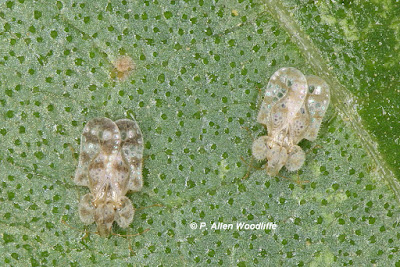But there were hairstreaks....lots and lots of hairstreaks. The Wild Lupines that this place is known for were finished flowering, of course, but there were scattered clumps of other flowering species, including Wild Bergamot in peak flower. But it was Butterfly Milkweed (Asclepias tuberosa) that seemed to be the big attraction for butterflies, and many of them were in their prime.
All one had to do was wander around and check the clumps of Butterfly Milkweed and one was sure to find butterflies. And there were hairstreaks by the dozens, almost always on a Butterfly Milkweed. I estimated that altogether, I saw about 130 hairstreaks of at least 4, possibly 5, species. In addition to the other butterflies, I totalled almost 200 individuals of 20 species. It was an incredible day and place for butterflies, especially hairstreaks, and will definitely be on my short list to re-visit next year when these milkweeds are again in their prime.
This next photo shows about half of a large double-headed Butterfly Milkweed. On one occasion, I counted 22 hairstreaks on it all at the same time on this flower head, and I couldn't see the back of it. I think a careful examination of this photo shows all or parts of 17 hairstreaks.
The most numerous hairstreak species was Edwards'.
I had several Grey Hairstreaks......
....and a good number of Coral Hairstreaks.
I'm not sure about the one in the centre of this next photo. On the one hand, with the blue lunule extending quite a bit farther than the adjacent orange spot, it seems to fit Hickory Hairstreak, but there is some debate whether it is more likely a Banded Hairstreak. I did see a few more normal Banded Hairstreaks.
This next one had me puzzled a bit at first, but I think I have determined that it is an Acadian Hairstreak. The extent of the orange along the trailing portion of the hindwing as well as the orange on top of the blue lunule looks good, but with the variability that hairstreaks are known for it is possible it is something else.
With about 130 or so hairstreaks to look through, and not all were photographed, I am sure I missed some. I did see other butterflies, including:
 |
| Clouded Sulphur |
Obviously Monarch's have been using the Butterfly Milkweed for more than just nectaring.
There were lots of American Coppers, a few Red-spotted Purples, a couple of Great Spangled Fritillaries, Eastern Tiger Swallowtail, etc., and a few skippers such as this Dun Skipper.
One of the other reasons I wanted to visit this conservation reserve was to check on a very rare species: Spotted Wintergreen (Chimaphila maculata). I used to get down to check on it periodically in my OMNR career, but hadn't seen it since. I thought I might be a bit late in the season for it, but it turned out that although some individuals had finished flowering, others were at their peak. It is a Threatened species under Ontario's Endangered Species Act. The population is off the beaten track at St. Williams, and I was pleased to find that it was doing quite well, even expanding a bit.
I'm always on the lookout for other things to photograph along the way. Here are a few that caught my eye.
 |
| Banded Longhorn Flower Beetle |
 |
| Red Chantarelle |
















































